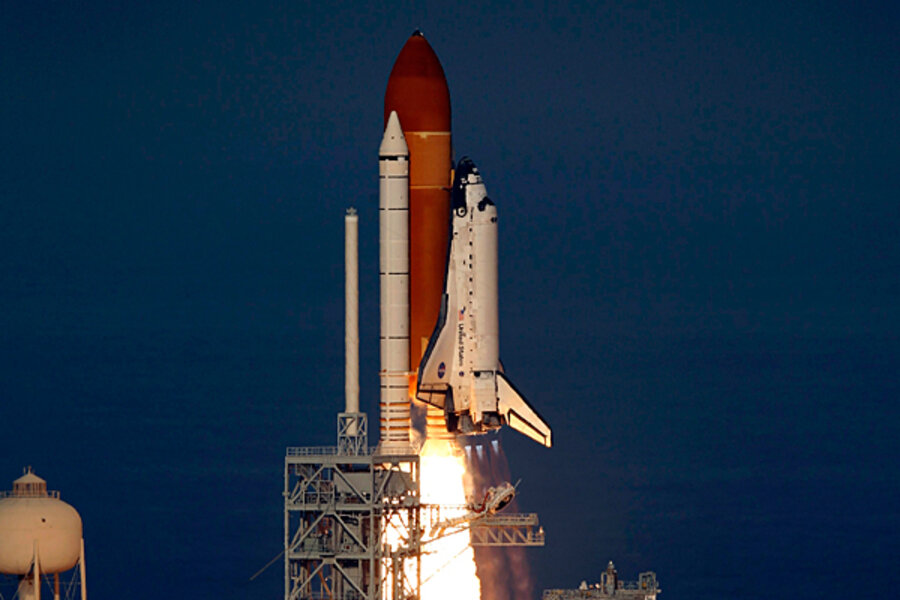For shuttle Discovery, a picture-perfect launch after months of delays
Loading...
| Houston
The space shuttle Discovery and its six-member crew arced into the afternoon sky Thursday in a photogenic lift-off that marks the venerable orbiter's final flight. The otherwise flawless launch, which followed months of delays to repair and prevent cracks around the shuttle's external fuel tank, experienced what appeared to be only minor glitches.
Crowds packed parking lots at the Kennedy Space Center's Visitors' Center, while cars and campers lined nearby causeways in numbers not seen for years. One NASA spokesman speculated that the number of spectators could rival some of the largest crowds ever to gather for a launch.
Over the next 11 days, the orbiter and crew are slated to deliver some 5 tons of supplies to the International Space Station, including Robonaut 2, a humanoid robot that could eventually become the station crew's silent partner in maintaining the orbiting outpost.
In addition, the shuttle is carrying a module once designed as a cosmic shipping container but which now will serve as additional storage space when it's mated to the space station during the mission.
For Discovery, "this is a great way to go out," said Michael Leinbach, the shuttle launch director during a post-launch briefing. All of the orbiter's systems worked flawlessly, and the repairs to the external fuel tank which delayed a launch originally scheduled for early November, appear to have been successful as well.
Still, Thursday's spectacular launch provided some tense moments when a glitch in a computer system used by a US Air Force unit responsible for launch-range safety delayed the lift-off to within a few seconds of the close of the day's launch window. That window is a span of time within which a launch will put the craft into the best position to rendezvous with the space station.
Typically when that window shuts, the launch gets rescheduled for the next available window.
Given the close call, the countdown "was one for the record books," said Mr. Leinbach.
In addition, controllers observed four pieces of insulating foam traveling down the length of the orbiter during the orbiter's ascent. The loss of the foam, which NASA engineers suspect came from the external fuel tank, occurred late in the ascent. Despite the shuttle's tremendous speed, the atmosphere was so thin that the pieces didn't appear to have much velocity relative to the orbiter.
NASA has worked hard to reduce the amount of foam the external tank sheds during launch, because foam striking the thermal protection system on the orbiter Columbia during launch in early 2003 led to its tragic destruction on reentry and the death of its seven-member crew at the end of its mission.
Between Thursday and Saturday, when Discovery is scheduled to rendezvous with the station, the crew will inspect the orbiter's heat-shedding tiles for potential damage.
In addition, as NASA's "close-out crew" strapped the space-suited astronauts into their seats and sealed the orbiter, someone inadvertently chipped a piece of heat-shedding tile from a spot near the crew hatch. The tiles protect the orbiter and crew from the heat of reentry at mission's end.
The team was able to quickly repair the ding.





